Introduction
Understanding your worth as a freelancer
Research industry standards
Assess your skills and experience
Consider your expenses and desired income
Know your target market
Identify your niche
Research your ideal clients
Understand their budget and needs
Pricing strategies for freelancers
Hourly rate
Project-based pricing
Value-based pricing
Conducting market research
Analyzing competitors’ rates
Understanding the market demand
Identifying pricing trends
Establishing a pricing structure
Creating different rate tiers
Offering package deals
Providing add-on services
Communicating your rates to clients
Transparently display rates on your website
Include expenses in project proposals
Clearly communicate the value you provide
Negotiating rates effectively
Understand your negotiation power
Focus on the value you bring
Be open to compromise
Reevaluating rates regularly
Assess your workload and availability
Consider adjusting rates based on demand
Seek client feedback
Dealing with rate objections
Addressing budget limitations
Highlighting the return on investment
Offering alternative pricing options
Building long-term client relationships
Exceeding client expectations
Offering loyalty discounts
Providing incentives for referrals
Continuous professional development
Investing in your skills and knowledge
Staying updated with industry trends
Leveraging certifications and credentials
Managing finances as a freelancer
Tracking income and rates
Setting aside taxes and savings
Working with an accountant or financial advisor
Tools and resources for rate setting
Freelance rate calculators
Online communities and forums
Professional associations and networks
Conclusion
How to Set Rates as a Freelancer
As a freelancer, determining the right expenses for your services can be a challenging task. Setting your charges too low may undermine your value and profitability, while setting them too high might make you lose potential clients. In this article, we’ll explore 15 tips to help you effectively set rates as a freelancer, ensuring fair compensation for your skills and expertise.

Understanding your worth as a freelancer
Before setting your charges, it’s crucial to understand your worth in the market. Take the following steps to assess your value accurately:
Research industry standards
Investigate the average price charged by freelancers in your field. This will give you a benchmark to work with and ensure you’re not significantly over or undercharging.
Assess your skills and experience
Evaluate your expertise, qualifications, and years of experience. The more specialized and experienced you are, the higher your rates can be justified.
Consider your expenses and desired income
Calculate your living expenses, business overheads, and desired income. This will help you determine the minimum charges required to sustain your freelance career.

Know your target market
Understanding your target market is essential for effective rate setting. By knowing your ideal clients and their specific needs, you can tailor your rates to align with their expectations. Consider the following steps:
Identify your niche
Determine your unique selling proposition and target a specific niche market. Specialization can allow you to charge higher charges.
Research your ideal clients
Study your potential clients’ industries, budgets, and pain points. This knowledge will enable you to position your charges strategically.
Understand their budget and needs
Consider your clients’ financial capabilities and the value they seek. Tailor your rates accordingly to strike a balance between affordability and profitability.
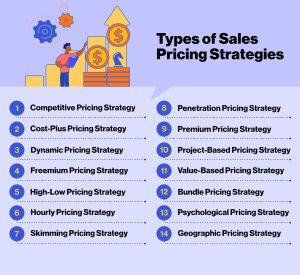
Pricing strategies for freelancers
As a freelancer, you have different pricing strategies at your disposal. Choose the most suitable approach for your services and target market. Here are three common strategies:
Hourly rate
Charging an hourly rate is straightforward and ideal for projects with uncertain scopes or ongoing work. Determine your desired hourly rate based on your financial goals and the estimated time required for each project.
Project-based pricing
Offering fixed rates for specific projects allows clients to know the exact cost upfront. Consider the project’s complexity, scope, and the value you’ll provide when determining the price.
Value-based pricing
Pricing based on the value you bring to clients ensures they pay for the results you deliver. Consider the impact your work will have on their business, such as increased revenue or efficiency gains.

Conducting market research
Market research is crucial for understanding industry trends, client expectations, and competitors’ rates. Follow these steps to conduct effective research:
Analyzing competitors’ rates
Research your competitors’ pricing to gain insights into the market landscape. Identify what sets you apart and justify your charges accordingly.
Understanding the market demand
Analyze the demand for your services and how it fluctuates over time. This information will help you adjust your charges to match the market conditions.
Identifying pricing trends
Stay updated on pricing trends in your industry. Factors such as supply and demand, economic conditions, and emerging technologies can influence rates.
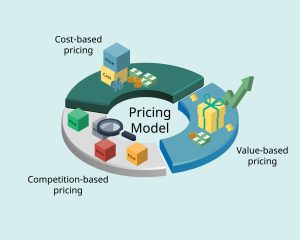
Establishing a pricing structure
Creating a pricing structure with different rate tiers and packages can attract a wider range of clients and cater to different budget levels. Consider the following:
Creating different rate tiers
Offer different levels of service at varying rates. This allows clients to choose the option that best suits their needs and budget.
Offering package deals
Bundling multiple services together can provide added value to clients and increase your overall earnings. Offer package deals at a discounted rate to incentivize clients to opt for a comprehensive solution.
Providing add-on services
Offer additional services or features that clients can add to their package for an extra fee. This allows you to increase your revenue while providing customization options to clients.

Communicating your rates to clients
Effectively communicating your charges to clients is crucial to avoid misunderstandings and ensure transparency. Use these strategies to present your charges clearly:
Transparently display rates on your website
Clearly showcase your prices on your website, preferably on a dedicated pricing page. This allows potential clients to evaluate your services and decide whether they fit their budget.
Include rates in project proposals
When sending project proposals, clearly mention your rates along with the scope of work. This helps clients understand the cost implications and make informed decisions.
Clearly communicate the value you provide
Along with your rates, emphasize the value clients will receive by working with you. Highlight your unique selling points and explain how your services will benefit their business.

Negotiating rates effectively
Negotiating is a common part of freelancing. To negotiate effectively, keep these tips in mind:
Understand your negotiation power
Assess the demand for your services, your expertise, and the client’s budget to determine your negotiation power. Leverage these factors to negotiate rates that align with your value.
Focus on the value you bring
During negotiations, emphasize the value and benefits you’ll provide to the client. Showcase your expertise and highlight how your work will help them achieve their goals.
Be open to compromise
Negotiations often involve finding a middle ground. Be flexible and open to compromise, but ensure that the final charges reflect the value you provide.

Reevaluating rates regularly
Freelancers should periodically evaluate their charges to ensure they remain competitive and reflective of their value. Consider the following factors when reevaluating rates:
Assess your workload and availability
If your workload is consistently high, it may be a sign that your charges are too low. Consider increasing your charges to balance supply and demand.
Consider adjusting rates based on demand
If the demand for your services increases or decreases, it may be necessary to adjust your rates accordingly. In high-demand periods, you can justify higher charges.
Seek client feedback
Collect feedback from your clients to assess their satisfaction and the value they perceive from your services. Use their input to fine-tune your rates and service offerings.
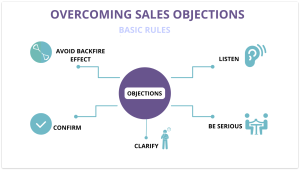
Dealing with rate objections
Clients may raise objections regarding your charges. Effectively address these objections to demonstrate the value you provide:
Addressing budget limitations
If a client has budget constraints, offer alternative pricing options such as phased payments or breaking the project into smaller milestones.
Highlighting the return on investment
Emphasize the long-term benefits and return on investment clients will gain from your services. Show how your work can contribute to their growth and profitability.
Offering alternative pricing options
If a client is hesitant about your rates, consider providing different pricing options, such as a lower-cost alternative with reduced deliverables.

Building long-term client relationships
Building strong client relationships can lead to repeat business and referrals. Consider these strategies to foster long-term partnerships:
Exceeding client expectations
Consistently deliver high-quality work and go the extra mile to exceed client expectations. This builds trust and justifies higher charges.
Offering loyalty discounts
Reward long-term clients with loyalty discounts or special offers. This encourages client retention and fosters a sense of partnership.
Providing incentives for referrals
Encourage clients to refer your services by offering referral incentives, such as discounts or additional benefits. This expands your client base and increases your chances of securing higher-paying projects.
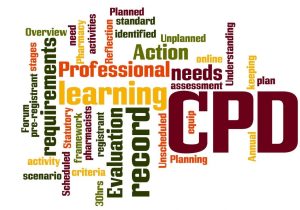
Continuous professional development
Investing in your professional development keeps your skills up-to-date and enhances your market value. Consider the following:
Investing in your skills and knowledge
Attend relevant workshops, conferences, and training programs to enhance your expertise. This allows you to justify higher rates based on the additional value you bring.
Staying updated with industry trends
Continuously monitor industry trends and emerging technologies. Position yourself as an expert in new and in-demand areas to command higher charges.
Leveraging certifications and credentials
Acquire certifications or credentials relevant to your field. These credentials add credibility and demonstrate your commitment to professional growth.

Managing finances as a freelancer
Effective financial management is crucial for the success of your freelance career. Consider the following tips:
Tracking income and expenses
Maintain accurate records of your income and expenses. This helps you understand your profitability and make informed decisions about your rates.
Setting aside taxes and savings
Set aside a portion of your earnings for taxes and savings. This ensures you’re prepared for tax obligations and creates a financial safety net.
Working with an accountant or financial advisor
Consider hiring an accountant or financial advisor to help you manage your finances effectively. They can provide valuable guidance on tax planning, budgeting, and rate setting.
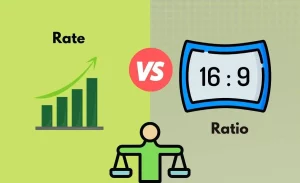
Tools and resources for rate setting
Several tools and resources can assist you in setting your rates appropriately. Explore the following options:
Freelance rate calculators
Use online freelance rate calculators to estimate your charges based on factors like experience, skills, and location. These calculators provide a starting point for rate negotiations.
Online communities and forums
Join freelancing communities and forums where professionals discuss charges and share their experiences. Engage with peers to gain insights and gather valuable information.
Professional associations and networks
Join industry-specific professional associations and networks. These organizations often provide resources, guidelines, and benchmarks for rate setting.
Conclusion
Setting your charges as a freelancer is a crucial aspect of running a successful business. By understanding your worth, knowing your target market, employing effective pricing strategies, conducting market research, and continuously evaluating your rates, you can ensure fair compensation for your services. Effective communication, negotiation, and building long-term relationships with clients are essential for sustainable growth. Additionally, investing in continuous professional development and managing your finances wisely will contribute to your success as a freelancer.

FAQs
How do I determine the right hourly rate for my freelance services?
Determining the right hourly rate involves considering factors like your expertise, experience, industry standards, and financial goals. Researching the market and analyzing competitors’ rates can also provide insights.
What should I do if a client objects to my rates?
When a client objects to your charges, focus on the value you provide. Highlight the return on investment and consider offering alternative pricing options or phased payments to accommodate their budget.
How often should I reevaluate my rates as a freelancer?
It’s recommended to reevaluate your charges periodically, at least once a year or when significant changes occur in your industry or market demand. Also, reevaluate when you notice consistent high demand or workload.
Are there any tools to help me calculate my freelance rates?
Yes, several freelance rate calculators are available online. These calculators consider factors like your skills, experience, and location to estimate appropriate charges. However, use them as a starting point and adapt the rates based on your unique circumstances.
How can I ensure healthy cash flow as a freelancer?
To maintain a healthy cash flow, track your income and expenses meticulously, set aside funds for taxes and savings, and work with an accountant or financial advisor who can help you manage your finances effectively.




![Top 10 Best Dinner Set Brands in India [year] Best Dinner Set Brands in India](https://top10collections.com/wp-content/uploads/2021/01/Best-Dinner-Set-Brands-in-India.png)
